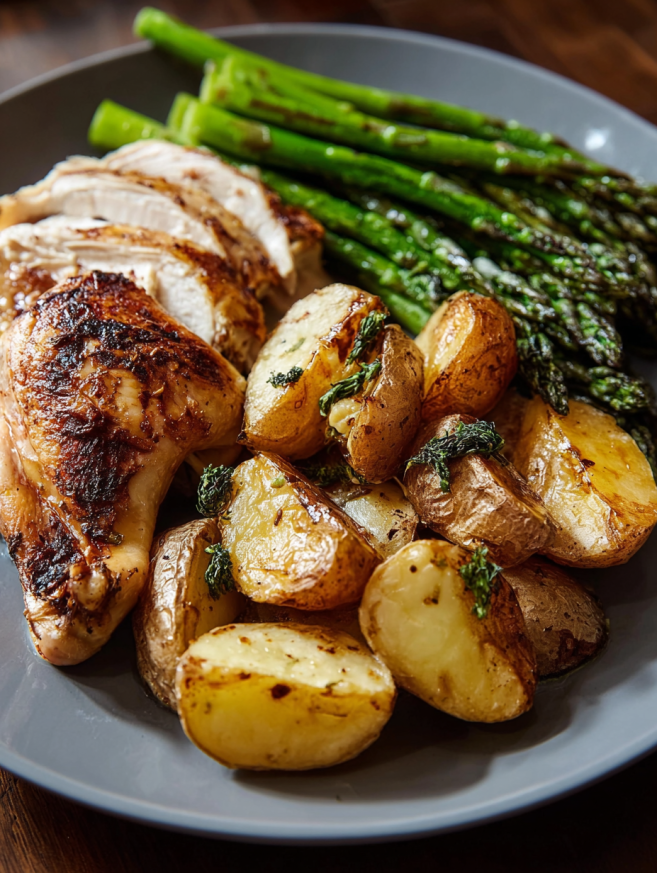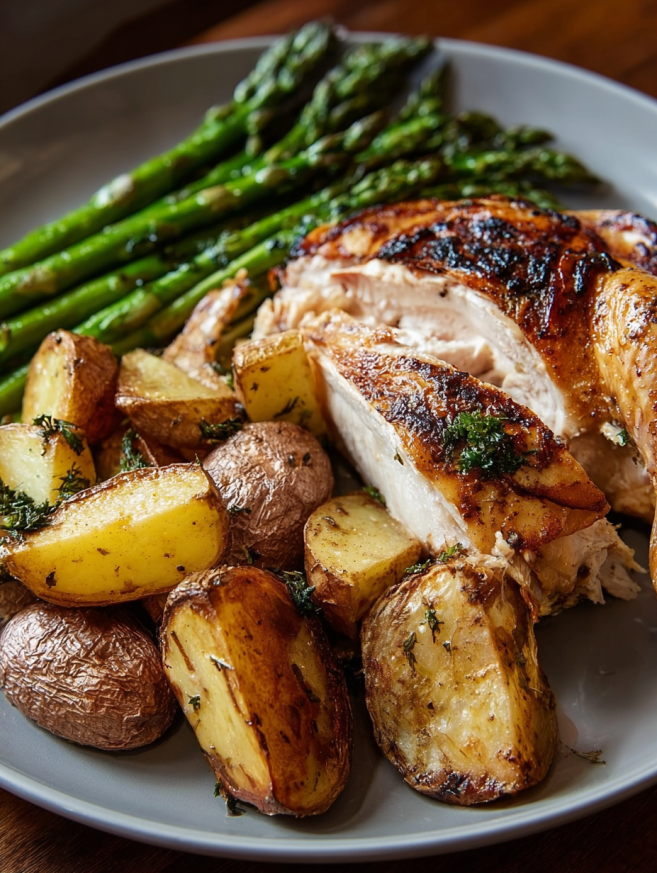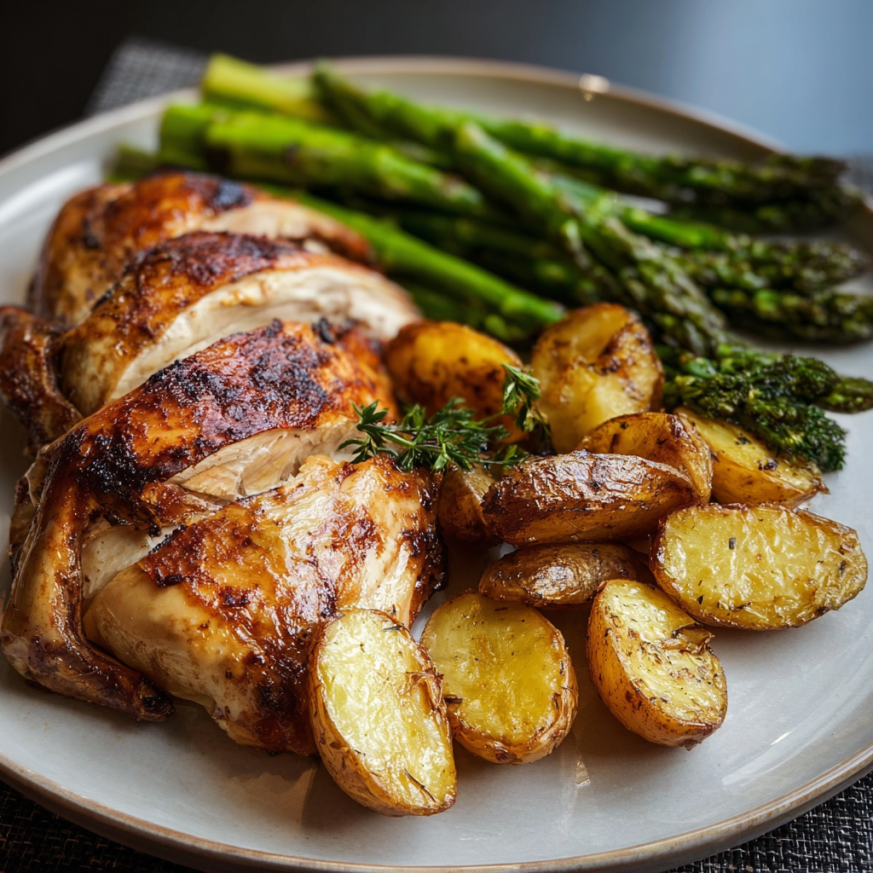Introduction
The first time I attempted to smoke a whole chicken, I’ll admit I was intimidated. Standing in my backyard with my new smoker, I wondered if I’d end up with leather-tough skin and dry meat. However, my neighbor—a seasoned pitmaster—shared his secret technique that changed everything. He taught me that the magic lies in the butter mixture and the two-temperature cooking method that creates impossibly tender meat wrapped in crispy, golden skin.
Years later, this smoked whole chicken has become my signature dish for family gatherings and weekend barbecues. There’s something deeply satisfying about presenting a perfectly smoked bird that’s been lovingly tended for hours. The aroma alone draws everyone to the backyard, and that first bite reveals meat so tender it practically falls off the bone. This recipe transforms a simple chicken into a masterpiece that rivals any restaurant’s best efforts.
Why You’ll Love This Recipe
Incredibly Tender and Juicy
The low-and-slow smoking process breaks down connective tissues while keeping the meat incredibly moist. Furthermore, the herb-infused butter mixture creates a protective barrier that prevents drying while infusing deep flavor throughout the bird.
Perfect Crispy Skin
Unlike many smoked chicken recipes that result in rubbery skin, this method includes a crucial temperature increase that transforms the skin into a crispy, golden masterpiece. The combination of butter and high heat creates the ideal texture contrast.
Impressive Presentation
Few dishes create such a stunning visual impact as a whole smoked chicken presented on a platter. Additionally, the aromatic herbs and beautiful golden color make it perfect for entertaining guests or special family dinners.
Feeds the Whole Family
A 3-4 pound chicken provides generous servings for 8 people, making it both economical and practical for feeding a crowd. Moreover, the leftovers are perfect for sandwiches, salads, and soups throughout the week.
Ingredients
For the Main Dish:
- 3-4 pound whole chicken, preferably air chilled
- 4 cloves garlic, peeled and lightly smashed
For the Butter Mixture:
- 2 teaspoons kosher salt
- 1 teaspoon onion powder
- 1 teaspoon garlic powder
- 1/2 teaspoon paprika
- 1/4 teaspoon black pepper
- 1 sprig rosemary, leaves stripped and minced
- 1 sprig thyme, leaves stripped and minced
- 8 tablespoons unsalted butter, melted
- 1/2 lemon (squeeze 1 tablespoon juice and use same lemon to stuff chicken)
For the Gravy Starter:
- 1 cup chicken stock
Serving Suggestions:
- Roasted root vegetables
- Creamy mashed potatoes
- Coleslaw or fresh garden salad
- Grilled corn on the cob
- Homemade gravy from drippings
Step-by-Step Instructions
Preparing the Smoker
Begin by preheating your smoker to 225°F, allowing it to reach a stable temperature before adding the chicken. Most pellet grills maintain moisture well, but you can add a pan of water in the corner of the smoker for additional humidity if desired.
This low temperature is crucial for breaking down the tough connective tissues while keeping the meat incredibly tender. The smoking process requires patience, but the results are worth every minute.
Creating the Flavor Base
In a medium bowl, combine the kosher salt, onion powder, garlic powder, paprika, and black pepper. Add the minced rosemary and thyme leaves, creating an aromatic herb blend that will infuse the entire bird.
Pour in the melted butter and fresh lemon juice, whisking everything together until you have a smooth, fragrant mixture. This compound butter will be the secret to your chicken’s incredible flavor and moisture.
Preparing the Chicken
Remove the giblets from the chicken cavity and pat the entire bird completely dry with paper towels. Moisture is the enemy of crispy skin, so take time to ensure the chicken is thoroughly dried inside and out.
Carefully separate the skin from the breast meat using your fingers, being gentle to avoid tearing the delicate skin. This step allows the butter mixture to penetrate directly into the meat for maximum flavor impact.
Stuffing and Seasoning
Stuff the chicken cavity with the smashed garlic cloves and the squeezed lemon half. These aromatics will infuse the meat from the inside while adding subtle citrus notes throughout the cooking process.
For a more professional presentation, truss the legs together with kitchen twine. This optional step helps the chicken cook more evenly and creates a neater appearance.
Applying the Butter Mixture
Generously spread two-thirds of the butter mixture under the loosened skin, working it over the breast meat and as much of the thighs as possible. The remaining mixture should be rubbed over the entire exterior of the chicken.
This double application ensures flavor penetration while creating the foundation for beautifully crispy skin. Don’t be afraid to be generous—the butter is what makes this recipe special.
Setting Up for Cooking
If planning to make gravy, pour chicken stock into a disposable aluminum pan and place it on the smoker below where the chicken will sit. Position the chicken directly on the grill grates above the pan to catch the flavorful drippings.
Alternatively, use a roasting pan with a rack, placing the chicken on the inner rack so it sits above the stock. This method also captures drippings while allowing proper air circulation.
The Two-Temperature Method
Smoke the chicken at 225°F until the internal temperature reaches 145°F in the thickest part of the breast. This initial low-temperature phase ensures tender, juicy meat throughout.
Once the chicken reaches 145°F, increase the smoker temperature to 375°F for the remainder of the cooking time. This crucial step transforms the skin from soft and pale to crispy and golden.
Finishing and Resting
Continue cooking until the internal temperature reaches 160°F in the thickest part of the breast. Remember that the temperature will continue to rise during the resting period, ultimately reaching the safe temperature of 165°F.
Transfer the finished chicken to a cutting board and let it rest for 20 minutes before carving. This resting period allows the juices to redistribute throughout the meat, ensuring every bite is perfectly moist.

Serving Suggestions
Traditional Sunday Dinner
Present the carved chicken alongside classic sides like mashed potatoes, roasted vegetables, and homemade gravy made from the collected drippings. This combination creates a memorable family meal that brings everyone together.
Backyard BBQ Feast
Serve the whole smoked chicken as the centerpiece of your outdoor gathering, accompanied by coleslaw, baked beans, and grilled corn. The impressive presentation makes it perfect for entertaining friends and neighbors.
Elegant Dinner Party
Carve the chicken tableside for dramatic effect, serving with sophisticated sides like wild rice pilaf and roasted Brussels sprouts. The restaurant-quality results will impress even the most discerning guests.
Recipe Variations
Cajun Spice Blend
Replace the herb mixture with Cajun seasonings including cayenne pepper, oregano, and additional paprika for a spicy Southern twist. This variation pairs beautifully with dirty rice and grilled vegetables.
Mediterranean Style
Incorporate Mediterranean herbs like oregano, basil, and dried sage into the butter mixture. Add lemon zest and serve with roasted potatoes and a Greek salad for a complete themed meal.
Asian-Inspired Version
Create an Asian fusion by adding soy sauce, sesame oil, and fresh ginger to the butter mixture. Serve with steamed rice and stir-fried vegetables for an international flavor profile.
Herb-Crusted Variation
Mix fresh chopped herbs with panko breadcrumbs and press onto the buttered chicken skin during the last 30 minutes of cooking for added texture and flavor.
Make-Ahead Tips
Seasoning Preparation
The butter mixture can be prepared up to three days in advance and stored in the refrigerator. Allow it to come to room temperature before applying to ensure easy spreading.
Chicken Preparation
Season and prepare the chicken up to 24 hours ahead, storing it covered in the refrigerator. This extended seasoning time actually improves flavor penetration and overall taste.
Smoking Strategy
For large gatherings, consider smoking multiple chickens simultaneously. Most smokers can accommodate 2-3 birds without crowding, making it efficient for feeding larger groups.
Leftover Planning
Plan for delicious leftovers by intentionally cooking extra chicken. The smoked meat is perfect for sandwiches, salads, and soups throughout the week.
Notes
Chicken Selection: Air-chilled chickens typically have better texture and flavor than water-chilled alternatives. The investment in quality ingredients pays dividends in the final result.
Temperature Monitoring: Use a reliable meat thermometer to ensure accurate temperature readings. The two-temperature method is crucial for achieving both tender meat and crispy skin.
Wood Selection: Fruit woods like apple or cherry complement chicken beautifully, while oak provides a more robust flavor. Avoid overly strong woods that might overpower the delicate meat.
Resting Importance: Never skip the resting period, as it’s essential for juice redistribution and achieving the perfect final temperature through carryover cooking.

Frequently Asked Questions
Q: Can I use a regular grill instead of a smoker? A: Yes, set up your grill for indirect cooking at 225°F. Use wood chips soaked in water to create smoke, and maintain consistent temperature throughout the cooking process.
Q: How do I know when the chicken is done? A: The most reliable method is using a meat thermometer inserted into the thickest part of the breast. The internal temperature should reach 160°F before resting.
Q: Why is my chicken skin not crispy? A: Ensure the chicken is completely dry before seasoning, and don’t skip the high-temperature finish. The temperature increase to 375°F is crucial for crispy skin development.
Q: Can I stuff the chicken with other ingredients? A: Yes, herbs, onions, or citrus fruits work well. However, avoid dense stuffings that might prevent even cooking or create food safety concerns.
Q: How long can I store leftover smoked chicken? A: Properly stored smoked chicken can be refrigerated for up to 4 days or frozen for up to 3 months. Reheat gently to maintain moisture and texture.
Q: What if my smoker temperature fluctuates? A: Small temperature variations are normal and acceptable. Focus on maintaining the general range rather than exact temperatures, and adjust cooking time accordingly.
Q: Can I make gravy from the drippings? A: Absolutely! The drippings collected in the pan create incredibly flavorful gravy. Simply strain out any solids and use your favorite gravy recipe with the enhanced liquid.
Q: Is it necessary to truss the chicken? A: While not required, trussing helps the chicken cook more evenly and creates a more professional presentation. It’s worth the extra minute of preparation time.

